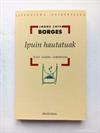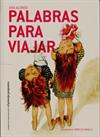
Labyrinth
by Kate Mosse | Mystery & Thrillers | This book has not been rated.
ISBN: 0752860542 Global Overview for this book
ISBN: 0752860542 Global Overview for this book
1 journaler for this copy...
From The Washington Post's Book World/washingtonpost.com
Kate Mosse's enviable accomplishments include being co-founder and honorary director of the Orange Prize for fiction as well as a respected commentator on the arts for the BBC. Lately, though, she's enjoyed an even more mouthwatering success. Having already published two well-received novels of a literary bent, including 1996's poignant Eskimo Kissing, she turned her hand to what she unabashedly calls "commercial fiction," a time-slip novel that her publishers have billed as a "women's adventure story." The result, a doorstop of a historical thriller, quickly sprinted to the top of the bestseller lists in her native Britain.
Labyrinth is a "women's" adventure story because, presumably, it showcases a strong female cast or, rather, a cast of strong females: two heroines, separated by 800 years, who find themselves pitted against a pair of glamorous, green-eyed female villains. As for the adventure bit, Mosse clearly warmed to her task, packing the novel with swordfights, sieges and massacres. At its heart is a hunt for the Holy Grail across the ruggedly beautiful Cathar country of southwest France.
All this medieval mayhem would be pointless without Mosse's good plot to hold things together. The story starts in the present with Alice, a lovelorn twenty-something on an archaeological dig in France, accidentally uncovering a pair of ancient skeletons and a stone ring embossed with a labyrinth symbol. So begins a fast-paced series of events that not only threatens Alice's life (cue a crucifix-wearing racist and sex offender named Authié) but also duplicates those that befell her medieval counterpart and near-namesake Alaïs, a plucky young newlywed from the nearby city of Carcassonne. The second strand of narrative -- cleverly intertwined with the first -- tells how, in the summer of 1209, as Carcassonne was besieged by bloodthirsty Crusaders, Alaïs headed for the hills with a mysterious book of hieroglyphics entrusted to her by her dying father.
Medieval history and legend are nimbly brought together in this second branch of the story. That the repulsive Authié wears a crucifix should alert us as to how Catholics (who worship what Alaïs calls a "cruel God") will become the baddies of the piece. Mosse shows the Crusaders as bent on stamping out heresy and, while they were at it, colonizing the rich lands of France's southern nobility. Their victims, the Cathars, currently enjoy a place as the most attractive and sympathetic of medieval heretics, and it's not hard to understand their modern appeal: They were, among other things, vegetarians who ordained female priests, believed in reincarnation and regarded Jews and Muslims as their equals. They were, according to Alaïs, "good men, tolerant men, men of peace who celebrated a God of Light." These liberal opinions served to get them evicted from their strongholds in the Languedoc area after a brutal, decades-long military campaign known as the Albigensian Crusade -- an act of persecution whose flesh-burning zeal Mosse recounts in terrifying detail.
Yet there's more to the Cathar story, of course. As every Grail buff knows, the Cathars were supposedly protectors of the Holy Grail, whose hiding place was the mountains of the Languedoc. Mosse duly picks up this legend but gives it a new twist: Early on, we learn how the true Grail (which turns out to have little to do with chalices or, indeed, Christianity) is summoned by bringing together three books known as the "Labyrinth Trilogy." One of these Alaïs has smuggled into a remote place in the Pyrenees; the other two have fallen into the clutches of her evil sister Oriane, a temptress who acquired one of them while bedding Alaïs's handsome new husband. Oriane will commit worse crimes than that, we suspect, to lay her hands on the final copy.
Following the extraordinary sales of a certain other bestseller, it would be tempting -- but unfair -- to attribute the success of Labyrinth to its scheming Catholics and reworking of the Grail legend. Nor is Labyrinth, as a work of commercial fiction, a cynical half-measure or crude attempt by a "serious" writer to pander to a wide audience. Mosse's writing does occasionally lapse into the clichés of the ripping-good-yarn genre. She provides plenty of what might be called cardiopulmonary hyperbole (pounding hearts, gasping lungs), as well as one too many cases of a character blacking out after an unexpected encounter between her skull and a blunt object. Still, the novel distinguishes itself by juggling two compelling story lines, unscrambling (and making digestible) chunks of medieval history and offering a pleasing wealth of information about the Languedoc, a region whose landscape and history Mosse loves deeply and knows intimately. Her contagious enthusiasm for the subject and dexterous handling of her material make for an open-throttle narrative drive across 500 pages of white-knuckle twists and turns.
A women's adventure novel? Labyrinth is a thumping good read that men, too, will surely enjoy. Why should the girls have all the fun?
Kate Mosse's enviable accomplishments include being co-founder and honorary director of the Orange Prize for fiction as well as a respected commentator on the arts for the BBC. Lately, though, she's enjoyed an even more mouthwatering success. Having already published two well-received novels of a literary bent, including 1996's poignant Eskimo Kissing, she turned her hand to what she unabashedly calls "commercial fiction," a time-slip novel that her publishers have billed as a "women's adventure story." The result, a doorstop of a historical thriller, quickly sprinted to the top of the bestseller lists in her native Britain.
Labyrinth is a "women's" adventure story because, presumably, it showcases a strong female cast or, rather, a cast of strong females: two heroines, separated by 800 years, who find themselves pitted against a pair of glamorous, green-eyed female villains. As for the adventure bit, Mosse clearly warmed to her task, packing the novel with swordfights, sieges and massacres. At its heart is a hunt for the Holy Grail across the ruggedly beautiful Cathar country of southwest France.
All this medieval mayhem would be pointless without Mosse's good plot to hold things together. The story starts in the present with Alice, a lovelorn twenty-something on an archaeological dig in France, accidentally uncovering a pair of ancient skeletons and a stone ring embossed with a labyrinth symbol. So begins a fast-paced series of events that not only threatens Alice's life (cue a crucifix-wearing racist and sex offender named Authié) but also duplicates those that befell her medieval counterpart and near-namesake Alaïs, a plucky young newlywed from the nearby city of Carcassonne. The second strand of narrative -- cleverly intertwined with the first -- tells how, in the summer of 1209, as Carcassonne was besieged by bloodthirsty Crusaders, Alaïs headed for the hills with a mysterious book of hieroglyphics entrusted to her by her dying father.
Medieval history and legend are nimbly brought together in this second branch of the story. That the repulsive Authié wears a crucifix should alert us as to how Catholics (who worship what Alaïs calls a "cruel God") will become the baddies of the piece. Mosse shows the Crusaders as bent on stamping out heresy and, while they were at it, colonizing the rich lands of France's southern nobility. Their victims, the Cathars, currently enjoy a place as the most attractive and sympathetic of medieval heretics, and it's not hard to understand their modern appeal: They were, among other things, vegetarians who ordained female priests, believed in reincarnation and regarded Jews and Muslims as their equals. They were, according to Alaïs, "good men, tolerant men, men of peace who celebrated a God of Light." These liberal opinions served to get them evicted from their strongholds in the Languedoc area after a brutal, decades-long military campaign known as the Albigensian Crusade -- an act of persecution whose flesh-burning zeal Mosse recounts in terrifying detail.
Yet there's more to the Cathar story, of course. As every Grail buff knows, the Cathars were supposedly protectors of the Holy Grail, whose hiding place was the mountains of the Languedoc. Mosse duly picks up this legend but gives it a new twist: Early on, we learn how the true Grail (which turns out to have little to do with chalices or, indeed, Christianity) is summoned by bringing together three books known as the "Labyrinth Trilogy." One of these Alaïs has smuggled into a remote place in the Pyrenees; the other two have fallen into the clutches of her evil sister Oriane, a temptress who acquired one of them while bedding Alaïs's handsome new husband. Oriane will commit worse crimes than that, we suspect, to lay her hands on the final copy.
Following the extraordinary sales of a certain other bestseller, it would be tempting -- but unfair -- to attribute the success of Labyrinth to its scheming Catholics and reworking of the Grail legend. Nor is Labyrinth, as a work of commercial fiction, a cynical half-measure or crude attempt by a "serious" writer to pander to a wide audience. Mosse's writing does occasionally lapse into the clichés of the ripping-good-yarn genre. She provides plenty of what might be called cardiopulmonary hyperbole (pounding hearts, gasping lungs), as well as one too many cases of a character blacking out after an unexpected encounter between her skull and a blunt object. Still, the novel distinguishes itself by juggling two compelling story lines, unscrambling (and making digestible) chunks of medieval history and offering a pleasing wealth of information about the Languedoc, a region whose landscape and history Mosse loves deeply and knows intimately. Her contagious enthusiasm for the subject and dexterous handling of her material make for an open-throttle narrative drive across 500 pages of white-knuckle twists and turns.
A women's adventure novel? Labyrinth is a thumping good read that men, too, will surely enjoy. Why should the girls have all the fun?







